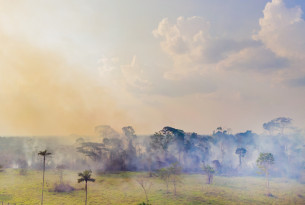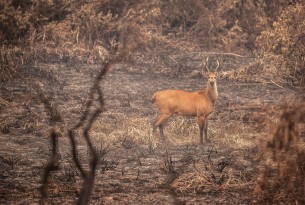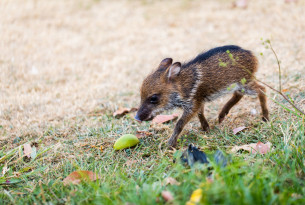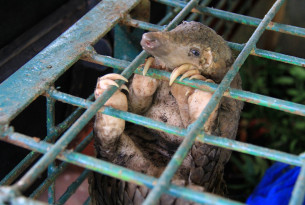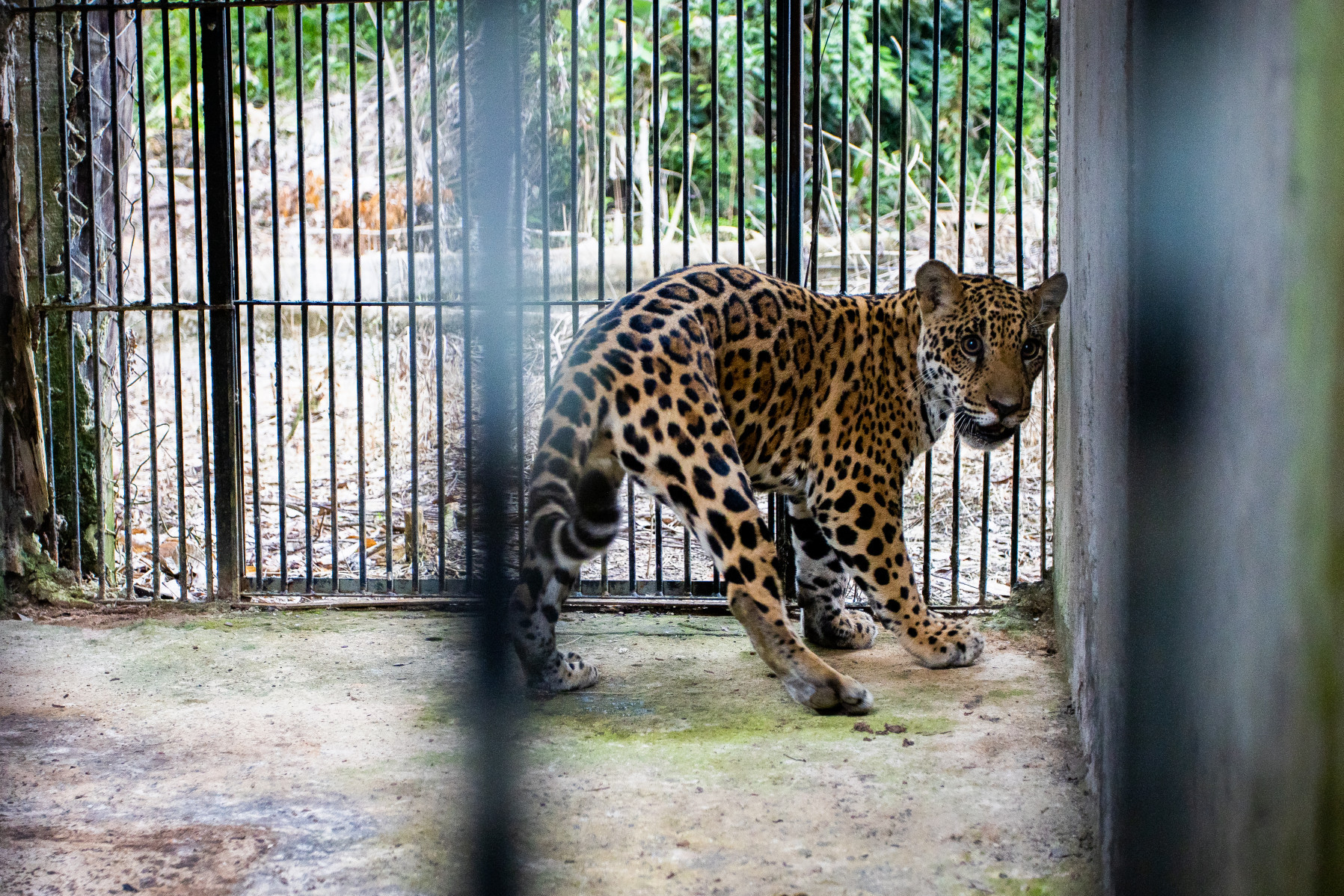
Rescued jaguar cub begins rehabilitation to return to the wild
Xamã, a jaguar cub who was found dehydrated and alone, begins rehabilitation to become the first male jaguar in Brazil to be successfully rescued, rehabilitated, and reintroduced to the Amazon.
Xamã’s story
Xamã (pronounced Shah-mah), the jaguar cub, was rescued during our emergency intervention in August 2022 in the Sinop region of Brazil during the fires, started deliberately to clear land for the farming industry. He was about two months old when he was found alone close by to an area impacted by the fires. The suspicion is that he got separated from his mother when he fled from the fire.
The cub was scared, malnourished, and dehydrated. Fortunately, the authorities were notified, and Xamã was swiftly rescued and taken to the Wild Animal Care Sector of the Veterinary Hospital (Hovet) of the Federal University of Mato Grosso (UFMT).
After five months of recovery, Xamã was transferred to a rehabilitation facility in the state of Pará in North Brazil.
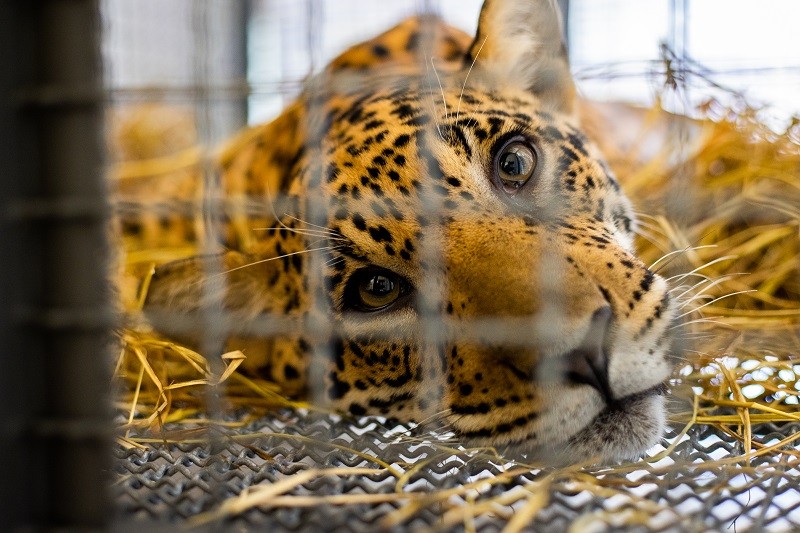
Xamã after sedation and pre-transfer tests, recovering in a transport carrier. | Photo: World Animal Protection / Noelly Castro
Xamã will remain at the rehabilitation center for up to two years, enjoying 15,000 m2 of lush Amazonian forest. He will be assisted by a team of biologists to acquire the basic behaviours of his species, such as hunting and defence, which he did not have the opportunity to learn from his mother.
For the next few months, Xamã will have the entire enclosure of dense and rich native forest exclusively for him, contact with humans will be minimal, and his movements will be monitored by cameras.
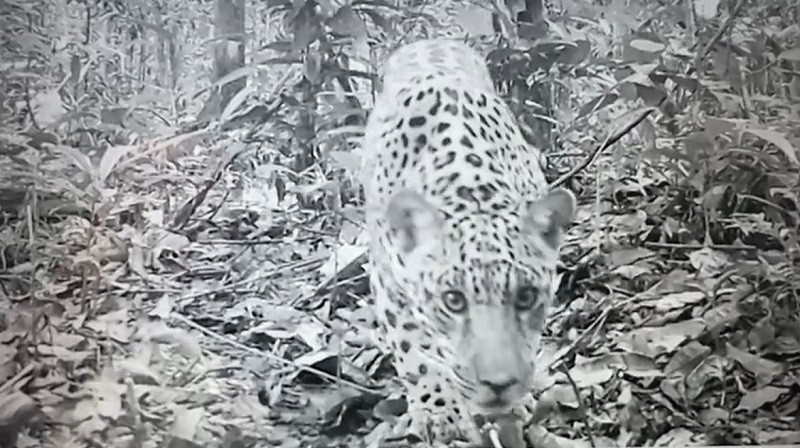
Xamã is spotted for the first time while moving around the rehabilitation facility | Credit: Leonardo Sartorello/Onçafari
When he has reached maturity at around 17-months of age and is ready to live in the open forest again, he will be released into a suitable and safe area. He will receive a radio collar that will allow remote monitoring for at least one year.
Throughout this process, Xamã will generate data that will indicate his adaptation and that will help in the future rehabilitation of other rescued jaguars, even supporting decisions for public policies.
Upon completing this process, Xamã will be the first male jaguar in Brazil to have been rescued and successfully reintroduced into the Amazon.
Unlike many other animals victimised by deforestation and wildfires in Brazil, Xamã has the opportunity to return to a wild life, thanks to our work and the support of animal lovers like you.
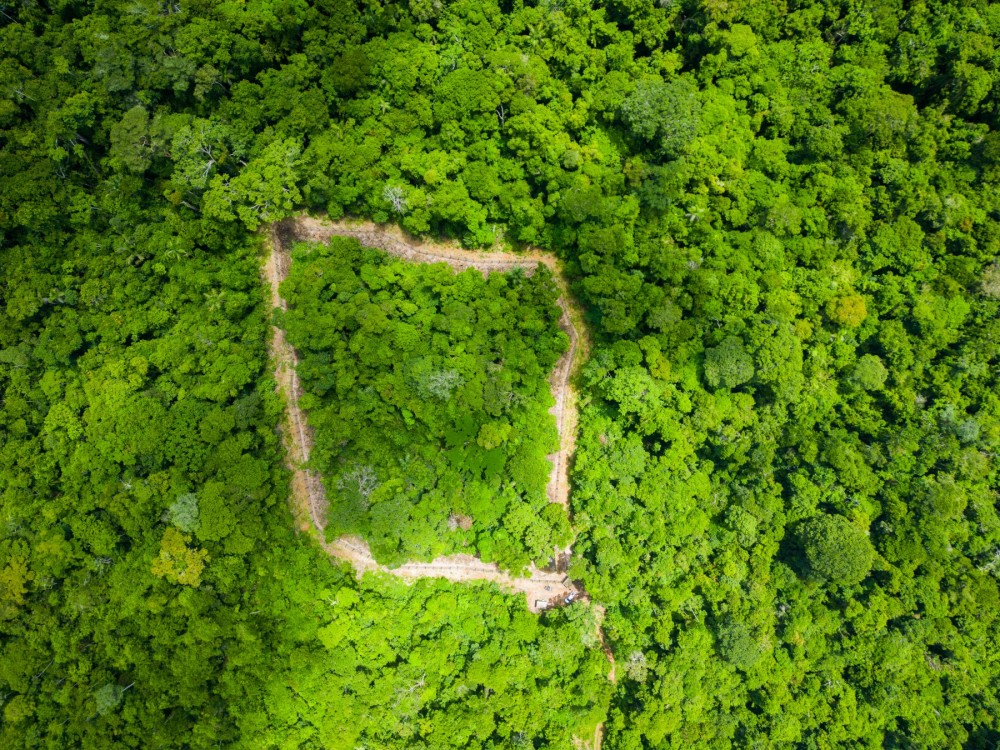
Aerial view of the rehabilitation enclosure where Xamã will remain for up to two years. | Photo: World Animal Protection / Noelly Castro
Victims of an unsustainable system
Xamã's situation is similar to that of so many animals that inhabit the north of Mato Grosso – an area of immense biodiversity - that end up needing urgent veterinary care.
According to data from the Instituto Nacional de Pesquisas Espaciais, the number of forest fires was particularly high between mid-August and September 2022, when Xamã (as well as many other animals) needed to be rescued.
Habitat loss and wildfires can impact animals through burns, dehydration, and asphyxiation by smoke. When they flee, the disorientation usually leads to subsequent traumas, such as shock, accidents when crossing roads or encounters with domestic animals. After the fire, they are also affected by the loss of nests, and lack of food (by the death of prey, burning of vegetation, fruits, and seeds) or water. For jaguars, top predators needing very vast living areas, the destruction of their habitat is particularly serious.
The separation of the young from their families adds to all this. For those that manage to recover, but who have not yet learned the basic behaviours of survival, this brings a new obstacle to the return to their habitats.
To make every possible effort to treat, restore, and return Xamã to his wild life, where he can fully perform his natural behaviours, is both a matter of collective responsibility and an act of resistance against the unsustainable food system which threatens the existence of wild animals and humans alike.
We cannot give up on the animals and on the efforts to change this broken system in Brazil and worldwide.
Wild animals deserve a wild life.
Together, we are changing the lives of animals
This entire project – from the rescue to the reintroduction of Xamã – has been undertaken by a group of partners dedicated to animal welfare and conservation:
- The process of rescuing, treating, and housing the animal so far has been the responsibility of the Hovet/Wild Animals Care Sector/UFMT team, with help from the Secretary of State for the Environment of Mato Grosso (Sema-MT).
- The Brazilian Institute for the Environment and Renewable Resources (Ibama) and the Chico Mendes Institute for Biodiversity Conservation (ICMBio), through the National Center for Research and Conservation of Carnivorous Mammals (Cenap), provided technical supervision and administrative management as public authorities.
- Onçafari, an entity specializing in the reintroduction of felines in the country, was involved to make the reintroduction possible and takes over from now on, also contributing resources, as a partner in the management of Xamã until their release and subsequent remote monitoring in nature.
- World Animal Protection, acted as sponsors and consultants for the project, having accompanied the cub's recovery phase locally in Sinop in collaboration with Ecotono Institute (IEco) .
“What makes Xamã different from other jaguars that we receive and treat over time is the way in which these partnerships were established, at the time and in the manner in which this happened.
The partners really made a difference by recognizing the importance of the animal, its condition and the possibility of successful rehabilitation and release. In addition to financial support, which is fundamental, the presence, follow-up, exchange of ideas brought security and support to the team.
The great lesson of this whole process is that animal protection and environmental conservation cannot be done alone: it is something that is done hand in hand”
- Veterinarian Elaine Dione Venêga da Conceição, professor from UFMT and responsible for Hovet's Wild Animal Care Sector.


